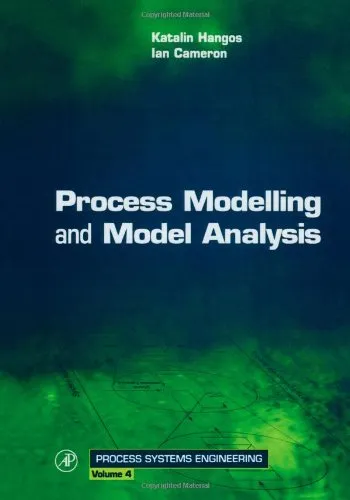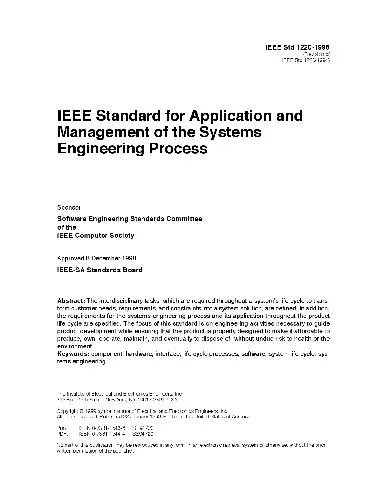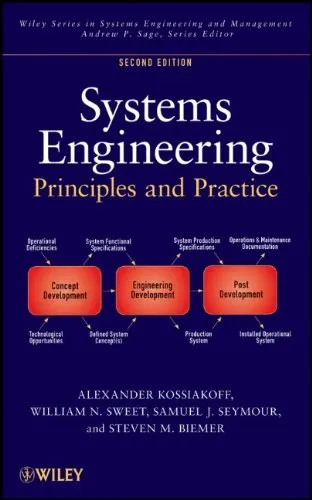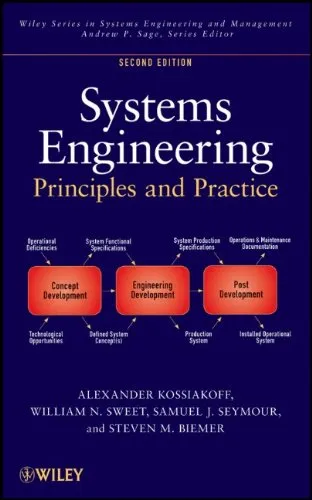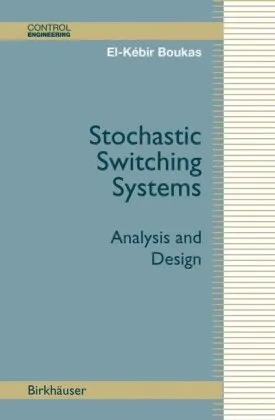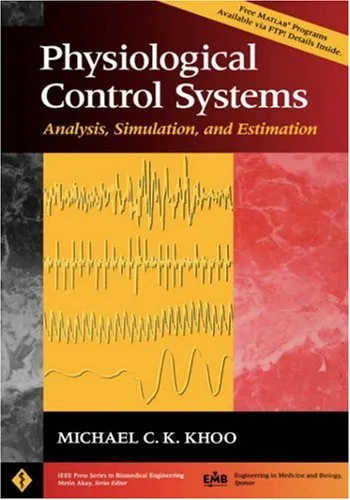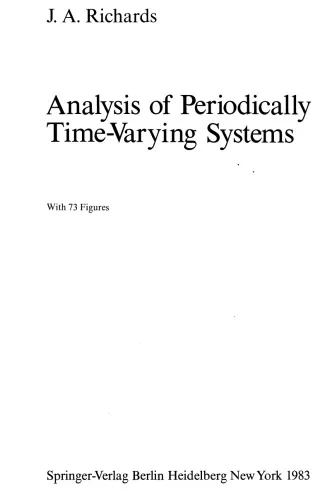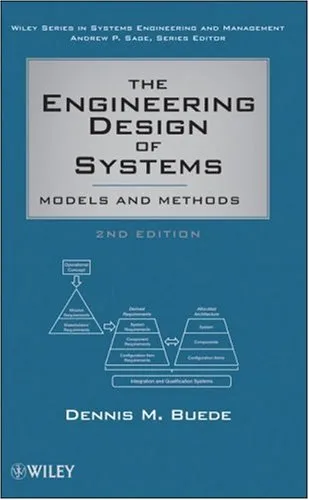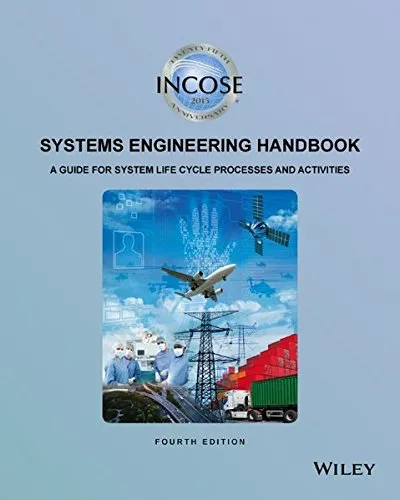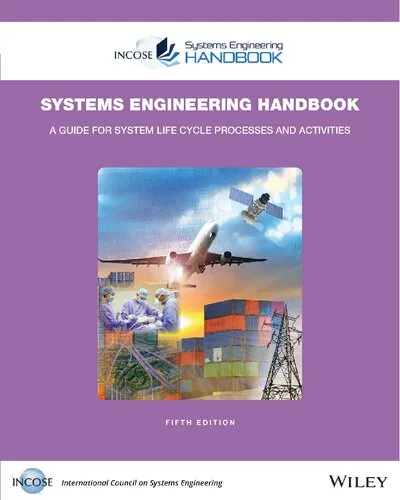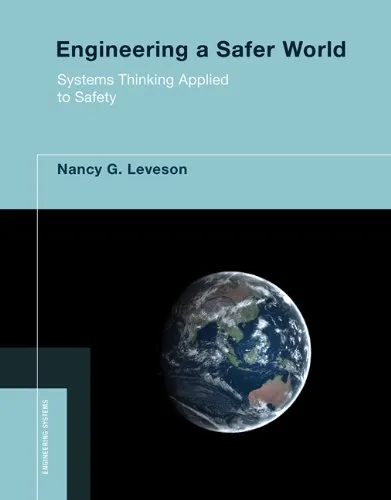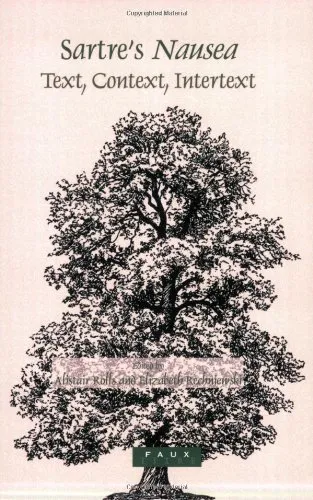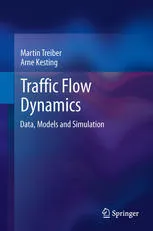Process Modelling and Model Analysis (Process Systems Engineering)
4.0
بر اساس نظر کاربران

شما میتونید سوالاتتون در باره کتاب رو از هوش مصنوعیش بعد از ورود بپرسید
هر دانلود یا پرسش از هوش مصنوعی 2 امتیاز لازم دارد، برای بدست آوردن امتیاز رایگان، به صفحه ی راهنمای امتیازات سر بزنید و یک سری کار ارزشمند انجام بدینکتاب های مرتبط:
مقدمهای بر کتاب "Process Modelling and Model Analysis (Process Systems Engineering)"
کتاب "Process Modelling and Model Analysis (Process Systems Engineering)" اثر 'Ian T. Cameron' و 'Katalin Hangos' یکی از منابع ارزنده و معتبر در حوزه مهندسی سیستمهای فرآیندی است. این کتاب بهصورت جامع و دقیق به مدلسازی فرآیندها و تحلیل مدلها میپردازد و برای مهندسین و دانشجویانی که در زمینه مهندسی شیمی و فرآیند فعالیت دارند، بسیار مفید است.
خلاصهای از کتاب
این کتاب شامل مباحثی از جمله اصول پایه مدلسازی فرآیندها، ویژگیهای مدلها، تکنیکهای مدلسازی و تحلیل مدلها میباشد. 'Process Modelling and Model Analysis' تلاش میکند تا ارتباط اصولی بین مدلهای تئوریک و کاربردهای عملی را برقرار کند. این متن حاوی مثالهای کاربردی و تمرینهای متعدد است که به خوانندگان کمک میکند تا مفاهیم پیچیده را بهخوبی درک کنند.
یکی از نقاط قوت این کتاب، تمرکز آن بر روی نحوه کاربردی کردن مدلها در صنعت و چگونگی بهبود عملکرد سیستمها با استفاده از این مدلها میباشد. نویسندگان تلاش کردهاند تا با نگاهی چندجانبه، تمامی جنبههای مدلسازی را پوشش دهند، از جمله مدلسازی ریاضی، شبیهسازی کامپیوتری، و تحلیل پایداری و حساسیت.
نکات کلیدی
- اهمیت مدلسازی و تحلیل مدلها در بهینهسازی فرآیندهای صنعتی
- تکنیکهای مدلسازی ریاضی و شبیهسازی کامپیوتری
- کاربردهای واقعی و عملی از فرآیند مدلسازی در صنایع شیمیایی
- روشهای تحلیل پایداری و حساسیت مدلها
- توسعه مدلهای پیشبینیکننده به منظور بهینهسازی عملکرد سیستمها
جملات معروف از کتاب
"مدلها تنها یک ابزار نیستند؛ آنها فرهنگ و زبان مشترک برای توسعه و بهبود فرآیندها در مهندسی شیمی هستند."
"تحقیق در مدلسازی نه تنها به پیدا کردن پاسخها میپردازد، بلکه به کشف سؤالات جدید نیز کمک میکند."
چرا این کتاب اهمیت دارد؟
این کتاب بهطور عمده به خوانندگان خود کمک میکند تا درک عمیقی از فرآیندهای مدلسازی و تحلیل مدلها داشته باشند. بهویژه برای کسانی که در صنایع شیمیایی و فرآیندی کار میکنند، فهمیدن و استفاده مؤثر از مدلها میتواند نقش بزرگی در بهینهسازی تولید و کاهش هزینهها داشته باشد. همچنین، این کتاب به عنوان یک مرجع علمی و آموزنده، به دانشجویان و محققین کمک میکند که درک بهتری از کاربرد مدلها در توسعه فرآیندها داشته باشند.
با مطالعه این کتاب، مهندسین قادر خواهند بود که مدلهای پیچیده را توسعه دهند، مسائل مربوط به پایداری و کارایی سیستمها را تجزیه و تحلیل کنند و راهحلهای نوآورانه و کارآمد برای بهبود فرآیندهای خود ارائه دهند. این کتاب نه تنها بهعنوان یک منبع آموزشی بلکه بهعنوان یک مرجع حرفهای برای مهندسان و دانشمندان شیمی توصیه میشود.
Welcome to an exploration of the world of process modeling and model analysis—fields that are foundational to the discipline of process systems engineering. The book Process Modelling and Model Analysis (Process Systems Engineering) serves as an invaluable resource for anyone encountered with the intricacies of process systems, bridging the gap between theoretical models and real-world applications. Our journey here will unveil the inclusive flow of this detailed expertise as captured in this work.
Detailed Summary of the Book
In the complex field of process systems engineering, understanding, designing, and optimizing chemical processes is crucial to advancing technology and efficiency. This book offers a comprehensive swim through a vast ocean of knowledge concerning process modeling and its subsequent analysis. The book begins with fundamental concepts tailored for those initiating their journey into process engineering. It discusses the basic definitions, principles, and scope of process modeling, setting a strong foundation for more complex topics.
Progressing deeper, the book integrates methodologies and tools essential for translating physical and chemical processes into mathematical models. It covers deterministic and stochastic processes, deploying structured approaches to showcase how engineers can solve practical problems in real-time environments. Various modeling techniques such as steady-state, dynamic, lumped, and distributed parameter models are meticulously covered.
Moreover, it emphasizes model analysis, which includes validation and verification techniques, ensuring that the theoretical models apply effectively to real-world scenarios. This book not only offers insights into model development but also instills the ability to critically analyze models for performance optimization.
Key Takeaways
The pivotal takeaway from this book is the ability to seamlessly convert complex process operations into intuitive models, which can be employed to improve existing systems or create novel solutions. Readers are equipped not only with knowledge of diverse modeling techniques but also with practical skills to implement these models efficiently.
Furthermore, the book offers insights into the criticality of model accuracy, emphasizing model validation and sensitivity analysis to ensure reliability. This fosters an understanding of how to identify and mitigate deviations in real systems. By the book's conclusion, readers are well-prepared to tackle broad challenges across varied process industries.
Famous Quotes from the Book
"The art of modeling is not only to simulate the reality as accurately as possible but to reveal the unseen opportunities hidden within industrial processes."
"A successful engineer must harness both theoretical capacity and practical mindset to transform processes into sustainable engineering achievements."
Why This Book Matters
This book holds significant importance in the realm of process systems engineering for several reasons. Firstly, it serves as a holistic guide that connects theoretical principles with empirical application, making it a critical resource for educators and practitioners alike. Its detailed exposition of methodologies provides a systematic approach to model appreciation and deployment, making the complex task of process optimization accessible.
Secondly, it is invaluable to the advancement of sustainable engineering practices. Readers are encouraged to consider efficiency and sustainability in their designs, reflecting current global trends toward green engineering solutions. These considerations highlight the book's relevance in today's rapidly evolving industry.
Finally, this book is an essential academic companion, guiding students and professionals through the often daunting terrain of industrial system modeling. It empowers them with tools and knowledge to not only address current industrial challenges but foresee and innovate future solutions. In a world consistently seeking increased optimization and reduced environmental impact, this book's content remains crucial.
In conclusion, Process Modelling and Model Analysis (Process Systems Engineering) stands as a testament to the intricate marriage of theory and practice. It invites its readers to not only understand existing processes but to become pioneers in creating efficient, innovative, and sustainable systems for future generations.
دانلود رایگان مستقیم
شما میتونید سوالاتتون در باره کتاب رو از هوش مصنوعیش بعد از ورود بپرسید
دسترسی به کتابها از طریق پلتفرمهای قانونی و کتابخانههای عمومی نه تنها از حقوق نویسندگان و ناشران حمایت میکند، بلکه به پایداری فرهنگ کتابخوانی نیز کمک میرساند. پیش از دانلود، لحظهای به بررسی این گزینهها فکر کنید.
این کتاب رو در پلتفرم های دیگه ببینید
WorldCat به شما کمک میکنه تا کتاب ها رو در کتابخانه های سراسر دنیا پیدا کنید
امتیازها، نظرات تخصصی و صحبت ها درباره کتاب را در Goodreads ببینید
کتابهای کمیاب یا دست دوم را در AbeBooks پیدا کنید و بخرید
1395
بازدید4.0
امتیاز0
نظر98%
رضایتنظرات:
4.0
بر اساس 0 نظر کاربران
Questions & Answers
Ask questions about this book or help others by answering
No questions yet. Be the first to ask!
